Sierra Leone first became inhabited by indigenous African peoples at least 2,500 years ago. The Limba were the first tribe known to inhabit Sierra Leone. The dense tropical rainforest partially isolated the region from other West African cultures, and it became a refuge for peoples escaping violence and jihads. Sierra Leone was named by Portuguese explorer Pedro de Sintra, who mapped the region in 1462. The Freetown estuary provided a good natural harbour for ships to shelter and replenish drinking water, and gained more international attention as coastal and trans-Atlantic trade supplanted trans-Saharan trade.
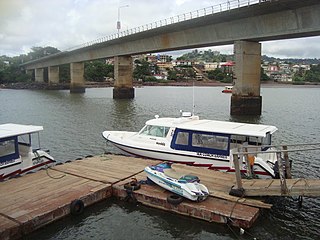
Freetown is the capital and largest city of Sierra Leone. It is a major port city on the Atlantic Ocean and is located in the Western Area of the country. Freetown is Sierra Leone's major urban, economic, financial, cultural, educational and political centre, as it is the seat of the Government of Sierra Leone. The population of Freetown was 1,055,964 at the 2015 census.
The Sherbro people are a native people of Sierra Leone, who speak the Sherbro language; they make up 1.9% of Sierra Leone's population or 134,606. The Sherbro are found primarily in their homeland in Bonthe District, where they make up 40% of the population, in coastal areas of Moyamba District, and in the Western Area of Sierra Leone, particularly in Freetown. During pre-colonial days, the Sherbro were one of the most dominant ethnic group in Sierra Leone, but in the early 21st century, the Sherbro comprise a small minority in the nation. The Sherbro speak their own language, called Sherbro language.
Thomas Peters, born Thomas Potters, was a veteran of the Black Pioneers, fighting for the British in the American Revolutionary War. A Black Loyalist, he was resettled in Nova Scotia, where he became a politician and one of the "Founding Fathers" of the nation of Sierra Leone in West Africa. Peters was among a group of influential Black Canadians who pressed the Crown to fulfill its commitment for land grants in Nova Scotia. Later they recruited African-American settlers in Nova Scotia for the colonisation of Sierra Leone in the late eighteenth century.

Lieutenant John Clarkson was a Royal Navy officer and abolitionist, the younger brother of Thomas Clarkson, one of the central figures in the abolition of slavery in England and the British Empire at the close of the 18th century. As agent for the Sierra Leone Company, Lieutenant Clarkson was instrumental in the founding of Freetown, today Sierra Leone's capital city, as a haven for chiefly formerly enslaved African-Americans first relocated to Nova Scotia by the British military authorities following the American Revolutionary War.
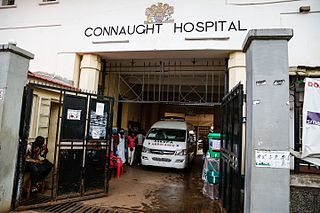
Connaught Hospital is the principal adult referral hospital in Sierra Leone.
John William Campbell was a Creole herbalist who worked at Connaught Hospital during the early 1900s.
The Jamaican Maroons in Sierra Leone were a group of just under 600 Jamaican Maroons from Cudjoe's Town, the largest of the five Jamaican maroon towns who were deported by the British authorities in Jamaica following the Second Maroon War in 1796, first to Nova Scotia. Four years later in 1800, they were transported to Sierra Leone.
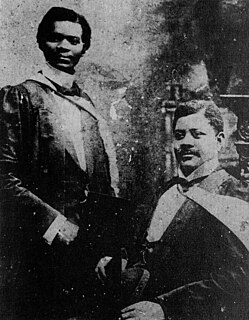
John Farrell Easmon, MRCS, LM, LKQCP, MD, CMO, was a prominent Sierra Leonean Creole doctor in the British Gold Coast who served as Chief Medical Officer during the 1890s. Easmon was the only West African to be promoted to Chief Medical Officer and he served in this role with distinction during the last decade of the 19th century. Easmon was a botanist and a noted expert on the study and treatment of tropical diseases. In 1884, he wrote a pamphlet entitled The Nature and Treatment of Blackwater Fever, which noted for the first time the relationship between Blackwater fever and malaria. Easmon coined the term "Blackwater fever" in his pamphlet on the malarial disease.
John William Campbell may refer to:
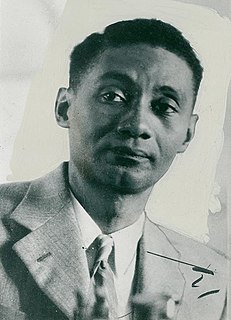
Raymond Sarif Easmon was a prominent Sierra Leonean doctor known for his acclaimed literary work and political agitation.
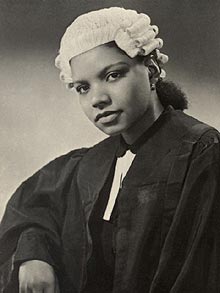
Frances Claudia Wright, OBE, was a prominent Sierra Leonean lawyer during the 20th century. Known as "West Africa's Portia", in 1941 Wright was the first Sierra Leonean woman to be called to the Bar in Great Britain and to practise law in Sierra Leone.

In April 1961, Sierra Leone became politically independent of Great Britain. It retained a parliamentary system of government and was a member of the British Commonwealth of Nations. The Sierra Leone People's Party (SLPP), led by Sir Milton Margai were victorious in the first general election under universal adult franchise in May 1962. Upon Sir Milton's death in 1964, his half-brother, Sir Albert Margai, succeeded him as Prime Minister. Sir Albert attempted to establish a one-party state had the ready cooperation of the opposition All People' Congress but met fierce resistance from some cadre within his party Sierra Leone People's Party (SLPP) and ultimately abandoned the idea.

Robert Benjamin Ageh Wellesley Cole, was a Sierra Leonean medical doctor who was the first West African to become a Fellow of the Royal College of Surgeons of England.

Constance Cummings-John was a Sierra Leonean educationist and politician. She was the first woman in Africa to join a municipal council and in 1966 became the first woman to serve as mayor of Freetown. She was based in London, England, for the latter part of her life.

Macormack Charles Farrell Easmon, OBE, popularly known as M. C. F. Easmon or "Charlie", was a Sierra Leone Creole born in Accra in the Gold Coast, where his father John Farrell Easmon, a prominent Creole doctor, was working at the time. He belonged to the notable Easmon family of Sierra Leone, a Creole family of African-American descent.

The Saro, or Nigerian Creoles of the nineteenth and early twentieth centuries, were formerly enslaved people who migrated to Nigeria in the beginning of the 1830s. They were known locally as Saro(elided form of Sierra Leone, from the Yoruba sàró). A related community of people were likewise known as Amaro, and were migrants from Brazil and Cuba.
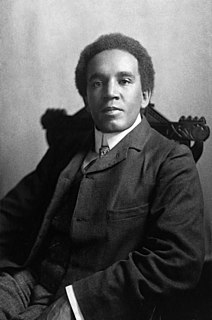
The Sierra Leone Creole people are an ethnic group of Sierra Leone. The Sierra Leone Creole people are descendants of freed African American, Afro-Caribbean, and Liberated African slaves who settled in the Western Area of Sierra Leone between 1787 and about 1885. The colony was established by the British, supported by abolitionists, under the Sierra Leone Company as a place for freedmen. The settlers called their new settlement Freetown. Today, the Sierra Leone Creoles are 1.3% of the population of Sierra Leone.

The Easmon family or the Easmon Medical Dynasty is a Sierra Leone Creole medical dynasty of African-American descent originally based in Freetown, Sierra Leone. The Easmon family has ancestral roots in the United States, and in particular Savannah, Georgia and other states in the American South. There are several descendants of the Sierra Leonean family in the United Kingdom and the United States, as well as in the Ghanaian cities of Accra and Kumasi. The family produced several medical doctors beginning with John Farrell Easmon, the medical doctor who coined the term Blackwater fever and wrote the first clinical diagnosis of the disease linking it to malaria and Albert Whiggs Easmon, who was a leading gynaecologist in Freetown, Sierra Leone. Several members of the family were active in business, academia, politics, the arts including music, cultural dance, playwriting and literature, history, anthropology, cultural studies, and anti-colonial activism against racism.











